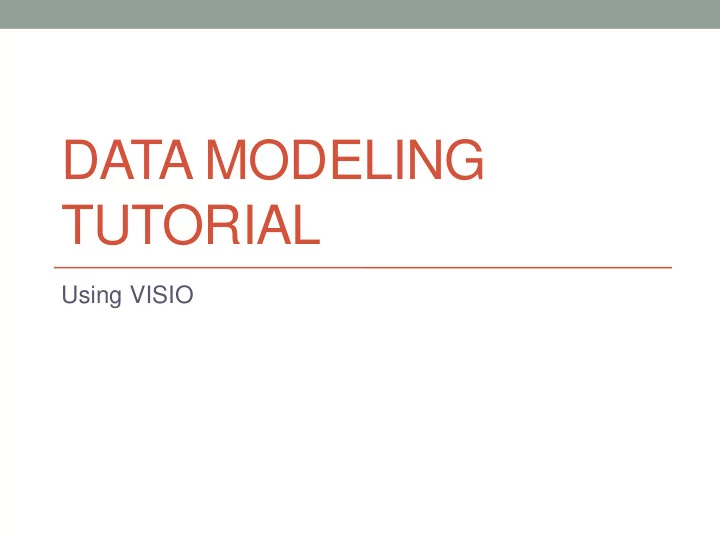

DATA MODELING TUTORIAL Using VISIO
P ROBLEM 1: staying in a hospital • Typically, a patient receives medications that have been ordered by a particular doctor. Because the patient often receives several medications per day, there is a 1:M relationship between PATIENT and ORDER. Similarly, each order can include several medications, creating a 1:M relationship between ORDER and MEDICATION. • • Identify the business rules for PATIENT, ORDER, and MEDICATION. •
The business rules • The business rules reflected in thePATIENT description are: • A patient can have many (medical) orders written for him or her. • Each (medical) order is written for a single patient. • The business rules refected in the ORDER description are: • Each (medical) order can prescribe many medications. • Each medication can be prescribed in many orders. • The business rules refected in the MEDICATION description are: • Each medication can be prescribed in many orders. • Each (medical) order can prescribe many medications.
Create a Crow's Foot ERD that depicts a relational database model to capture these business rules. Natural Relationship between order and medication is N:M When that happens we need to convert to an association with an entity in between the two original entities
United Artists Data Model • A painter can paint may paintings. • Each painting is painted by only one painter. • A gallery can exhibit many paintings. • A painter can exhibit paintings at more than one gallery at a time. (For example, if a painter has painted six paintings, two may be exhibited in one gallery, one at another, and three at the third gallery. Naturally, if galleries specify exclusive contracts, the database must be changed to reflect that business rule.) • Each painting is exhibited in only one gallery.
UA ERD Model
Problem 3 _ relationships • A professor can teach many classes. • Each class is taught by one professor. • A professor can advise many students. • Each student is advised by one professor.
Problem 4: ABC Company
Populating the Model phase 1
Populating the Model phase 2
Populating the Model phase 2
Populating the Model phase 3
Populating the Model phase 4
Or Populating the Model phase 5
Recommend
More recommend